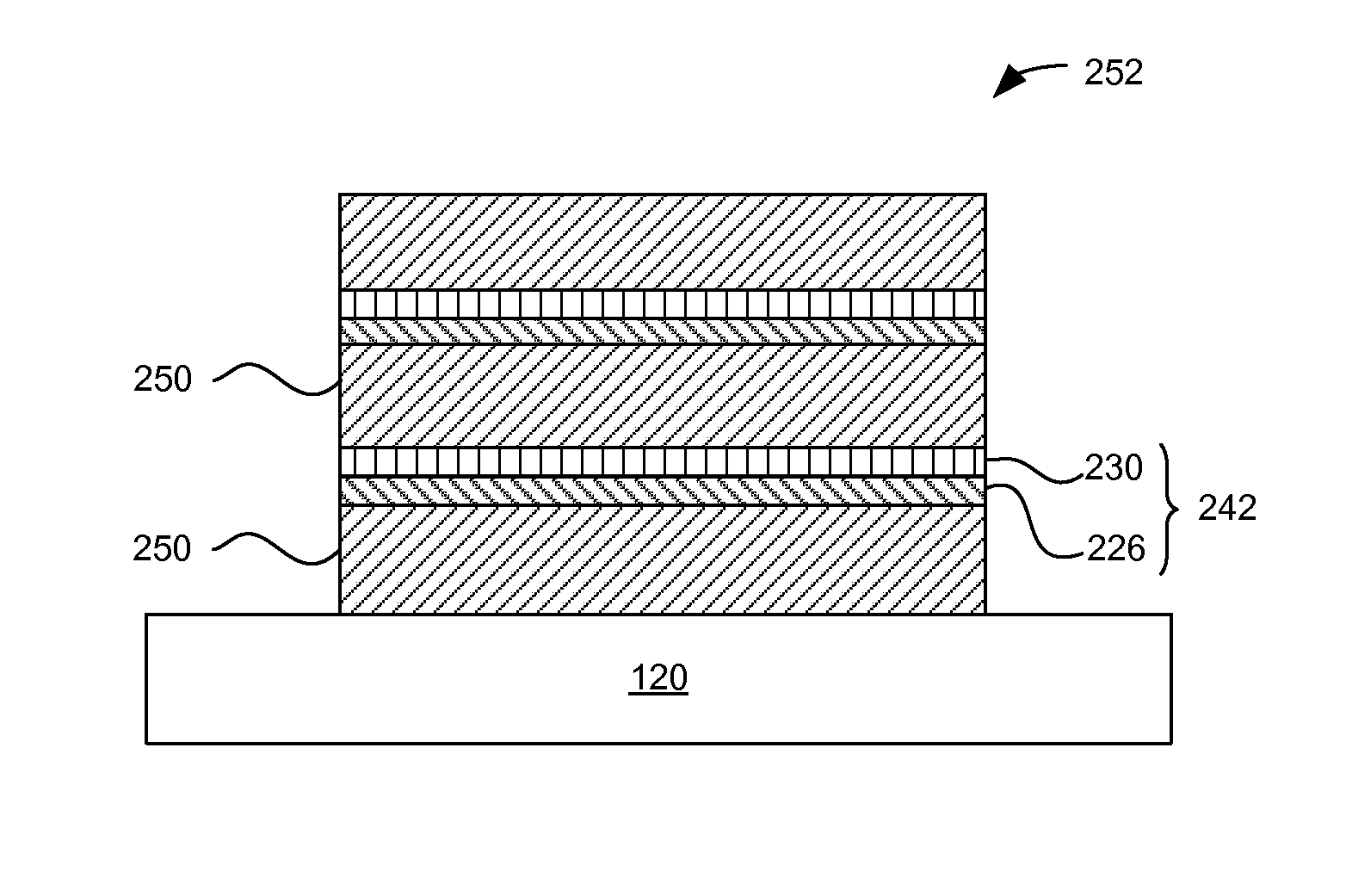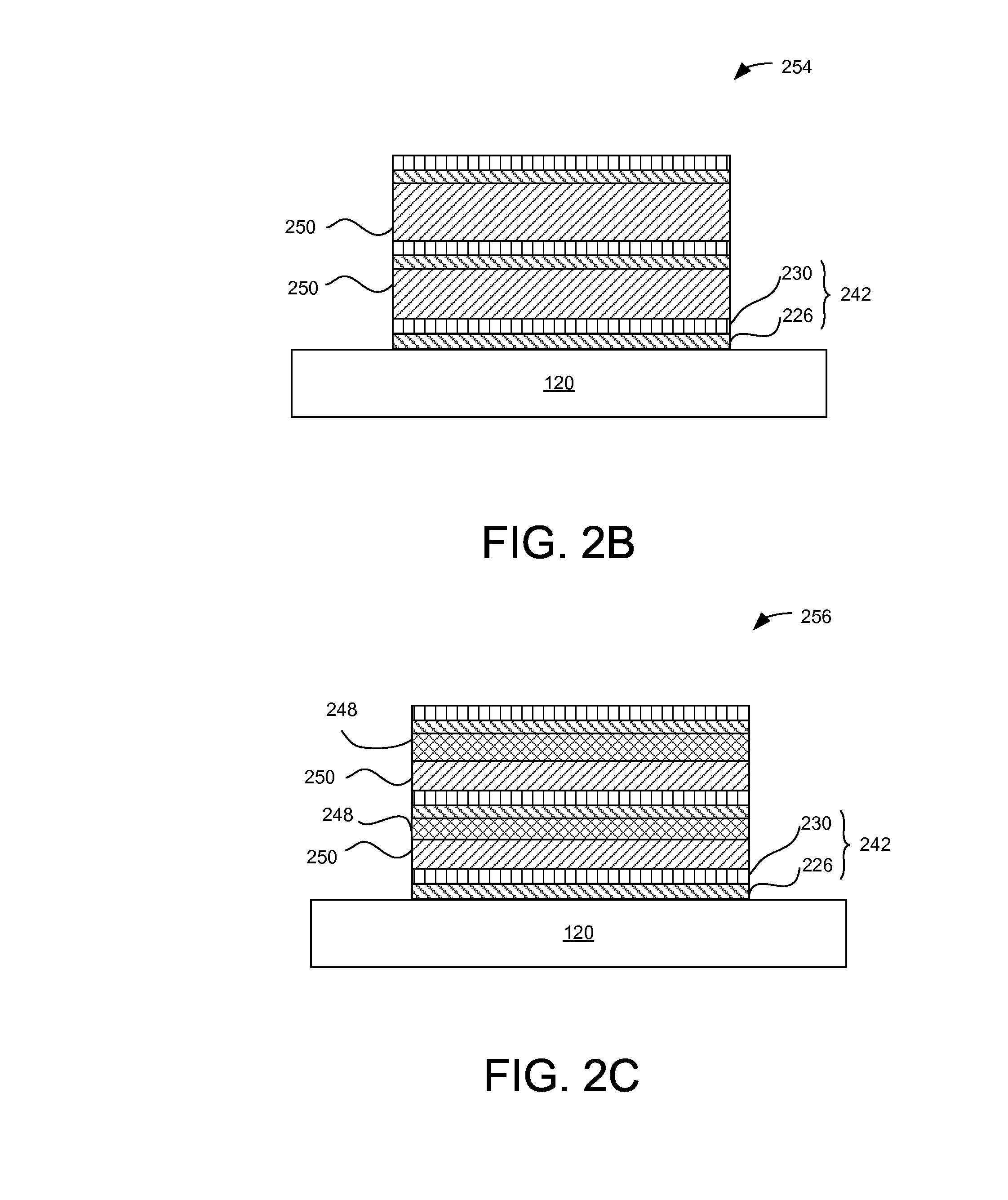Deposition of non-isostructural layers for flexible substrate
a technology of flexible substrate and non-isostructural layer, which is applied in the direction of layered products, transportation and packaging, coatings, etc., can solve the problems of shortening the life or degrading performance of flexible substrates, cracks in flexible substrates or materials formed on flexible substrates, and shortened lifespans, so as to increase the reactivity of hydrocarbon-containing source precursors, and increase the reactivity of precursors
- Summary
- Abstract
- Description
- Claims
- Application Information
AI Technical Summary
Benefits of technology
Problems solved by technology
Method used
Image
Examples
example deposition
Device
[0044]FIG. 6 is a conceptual diagram illustrating a series of reactors placed over a moving substrate 120 for injecting precursors onto the substrate 120, according to one embodiment. The substrate 120 may be placed in a susceptor (not shown) that moves the substrate 120 relative to the series of reactors. The path of relative movement may be linear as illustrated, or the path of relative movement may be circular when the reactors are arranged around an axis of the susceptor's rotation relative to the reactors (not illustrated). In the embodiment of FIG. 6, the reactors P0 through P5 and S1 through S5 are arranged in tandem and configured to inject precursor materials onto the substrate 120 as the substrate 120 moves below the reactors (as indicated by arrow 612). Reactors P0 through P5 generate reactant precursor such as radicals and inject the reactant precursor onto the substrate 120. The reactors S1 through S5 inject one or more types of source precursor (e.g., hydrocarbon...
PUM
| Property | Measurement | Unit |
|---|---|---|
| Thickness | aaaaa | aaaaa |
| Ratio | aaaaa | aaaaa |
| Electrical conductor | aaaaa | aaaaa |
Abstract
Description
Claims
Application Information
 Login to View More
Login to View More - R&D
- Intellectual Property
- Life Sciences
- Materials
- Tech Scout
- Unparalleled Data Quality
- Higher Quality Content
- 60% Fewer Hallucinations
Browse by: Latest US Patents, China's latest patents, Technical Efficacy Thesaurus, Application Domain, Technology Topic, Popular Technical Reports.
© 2025 PatSnap. All rights reserved.Legal|Privacy policy|Modern Slavery Act Transparency Statement|Sitemap|About US| Contact US: help@patsnap.com



